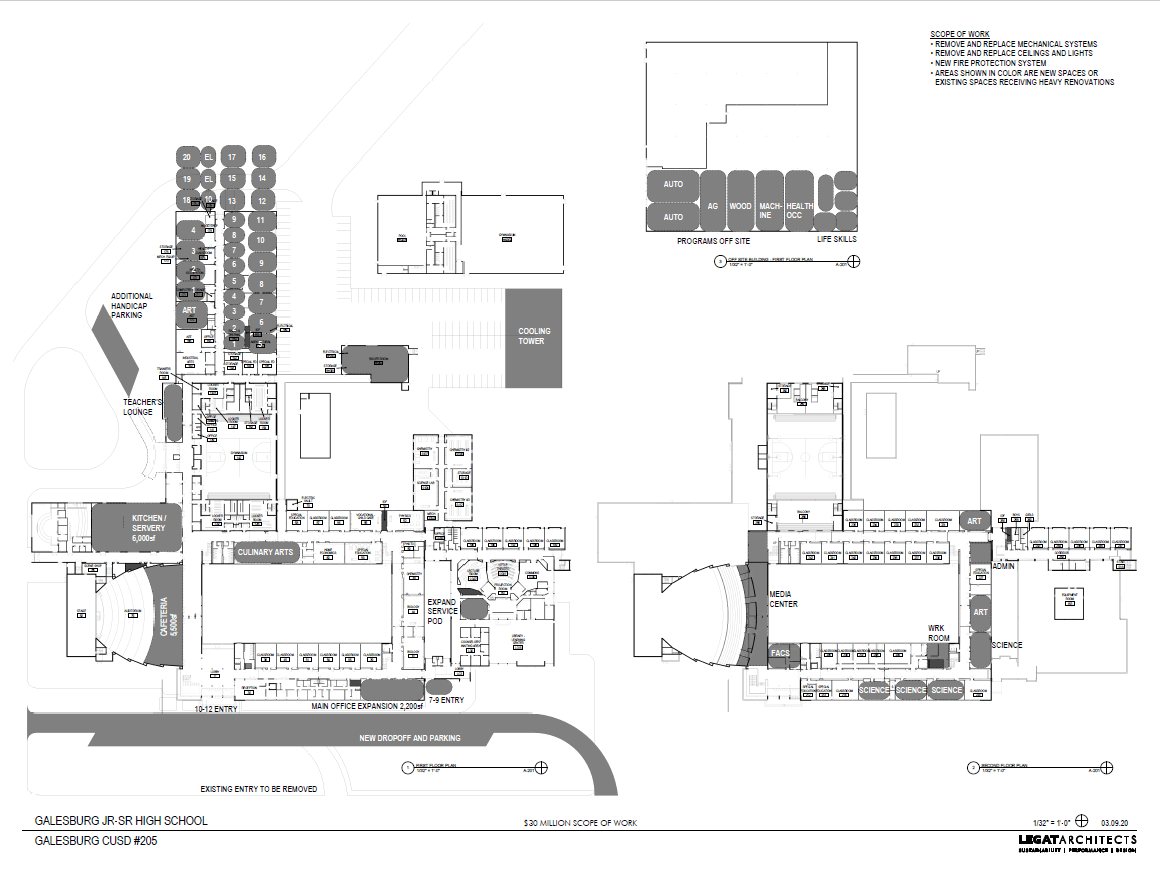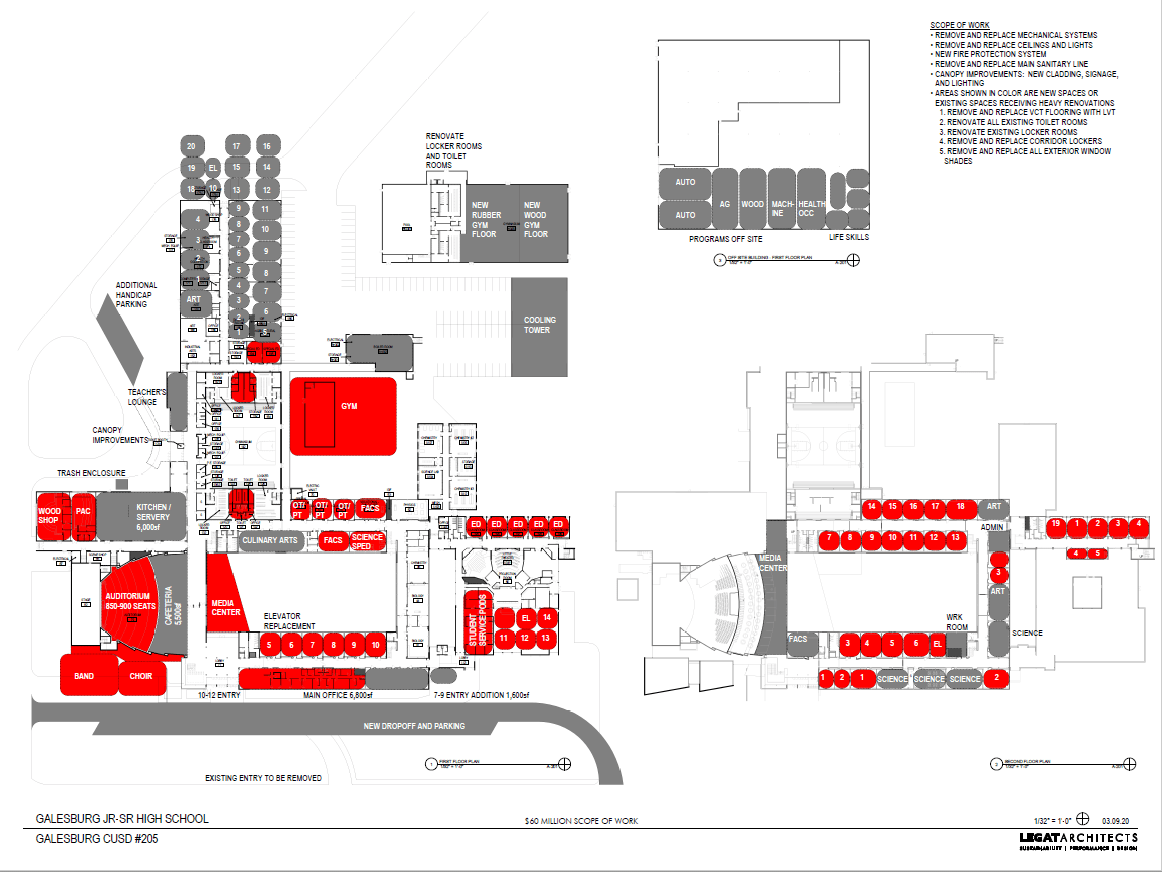School Board members with District 205 have indicated they are willing to delay moving the high school building renovation projects forward as aggressively as they previously planned after new information came to light regarding the state’s capital funding bill.
The Board of Education heard an update regarding the committee that is crafting the rules and guidelines from Superintendent Dr. John Asplund, who is part of that commission.
Asplund says that the idea being floated around would be similar to the capital bill from years past.
“The discussion has been at the committee level, was mimicking the old path that was used. So, what would happen would be, let’s say, the deadline is April first for applications. You would submit your application. They would then vet it over the course of the next year. And then, you’d find out, basically, the next March if you got funding,” Asplund told board members at the Monday night meeting.
“The big change, though, was that the committee recommended that the funding by district align with your local capacity target — which is a percentage of how much you’re able to raise in local funds. So our local capacity target is roughly 28 percent.”
Local capacity is based on the Evidence-Based Funding Model.
As an example, Asplund said if the district had a $100M project, the district would only be responsible for funding $28M while the state would fund the additional $72M.
With the ‘old path’ that Asplund talked about, the district would have to wait until April of 2021 if the district would be eligible to submit and it would be another year before 205 could even apply.
Asplund said that the district has been in talks with Peoria State Senator Chuck Weaver and Senate Republicans to try to craft language into the bill for an accelerated path. The possible proposal would allow a district to take the accelerated path but they wouldn’t have access to the same level funding.
Another example from Asplund, using the hypothetical $100M project, the district would take half, $36M, instead of the $72M so that the state could get state money in a year instead of two.
There is one major issue.
“The other caveat of all of these is, once you have accepted bids on a project, that project is no longer eligible for state funding. So, using that, we would not be able to apply for any funding for Lombard, or King, or Steele, or the GHS kitchen project. So none of those projects would eligible for state funding. We already know that. But if we wanted to delay part, or all, or some, however you want to define it, of our high school campus, soon to be 7-12 campus, in an effort to access [some state funding] we thought that was a discussion worth having.”
Board members discussed delaying the full scope of the project in an effort to acquire additional funding.
Bryan Archibald from Legat Architect and Lee Marbach from Russell Construction spoke to the board about what the 7-12 center would look like with the additional funding. While the drawings are purely conceptional, it would mean a near-complete renovation for the current high school, including new lockers, a new gym, media center, auditorium upgrades, new band and choir room, and new doors and hardware.
Would the district delay the whole project until learning if they were awarded funds? The indication is no. Marbach told the board could parse the project up into smaller chunks so work was constantly being done.
One example, given by Dr. Asplund, was to work on the second floor of the high school, which is planned to serve as the seventh and eighth-grade classrooms, first using the district’s maintenance staff for the demo projects.
Since there would be no bidding process for the work, continued demolition of the second floor could be bid out at a later date, once the district found out their eligibility with the state grant.
Regardless, Asplund said that no one will know what the end result of the capital funding bill will look like until the end of the school year. He says the district is putting a lot of effort into convincing legislators the accelerated path is the way to go.
“We are putting a great deal of effort into trying to convince enough legislators that the accelerated plan is beneficial to the state and to school districts. And that there wouldn’t be that many school districts that would avail themselves of that opportunity anyway.”
He added that the state could use the extra money not spent on Galesburg to go to another district.
The “slightly slowed down” version of the plan would involve only vacating the top floor of the high school while the district waited to see what the state funding bill would look like.
An additional concern that was raised was in regards to the Life/Safety bonds. The district has a 36 months window to spend the money on those projects, which began a year ago. However, Jennifer Hamm, Assistant Superintendent For Finance and Operation, told the board that the district can submit an explanation for why an extension would be needed, and it could get extended.
The board seemed on board with waiting to make a firm decision until then.
Click below for FAQ and building plans provided by District 205.
https://www.galesburg205.org/o/galesburg-cusd-205/browse/90903








